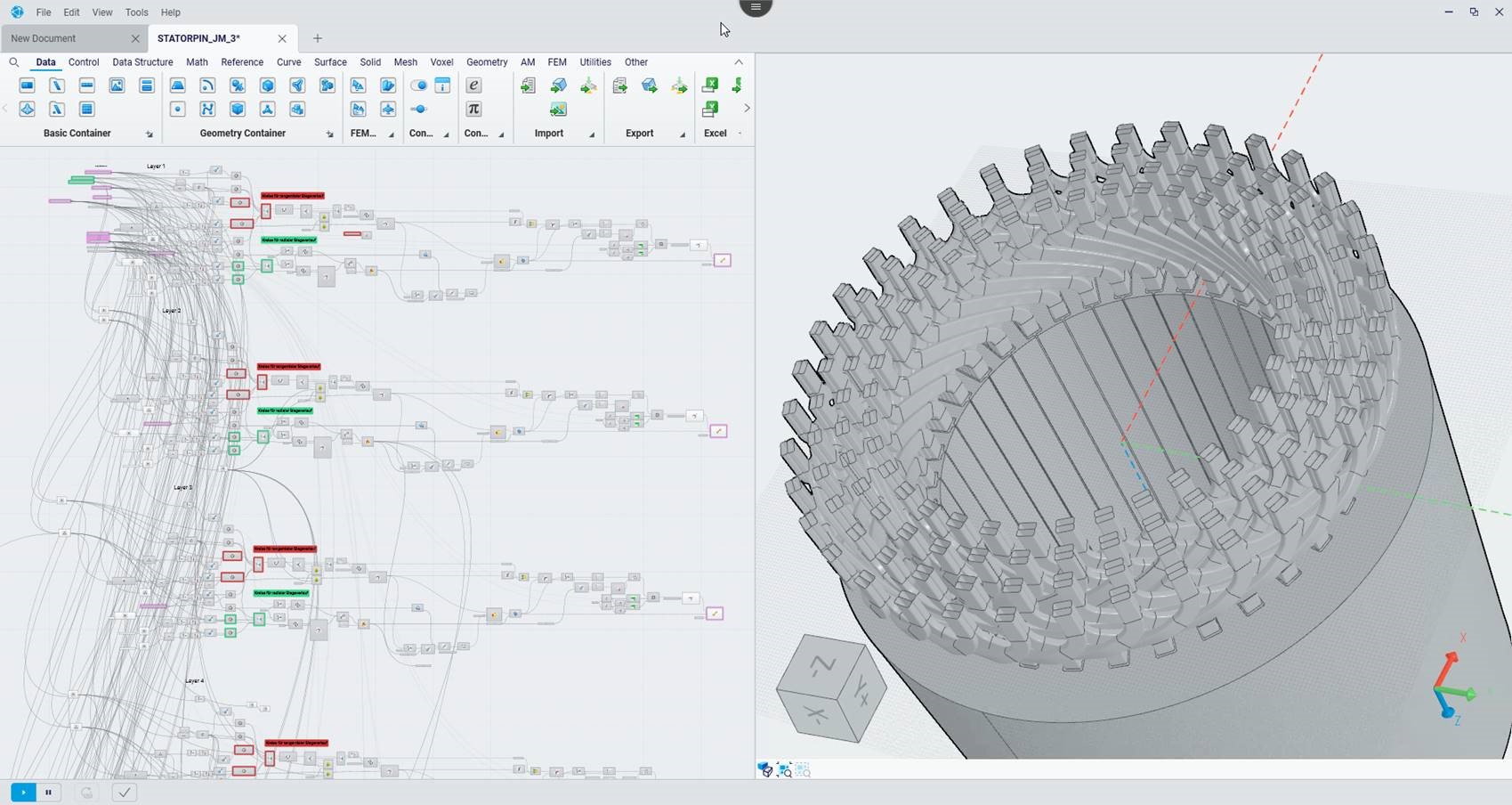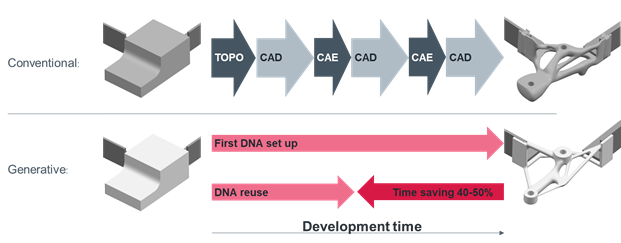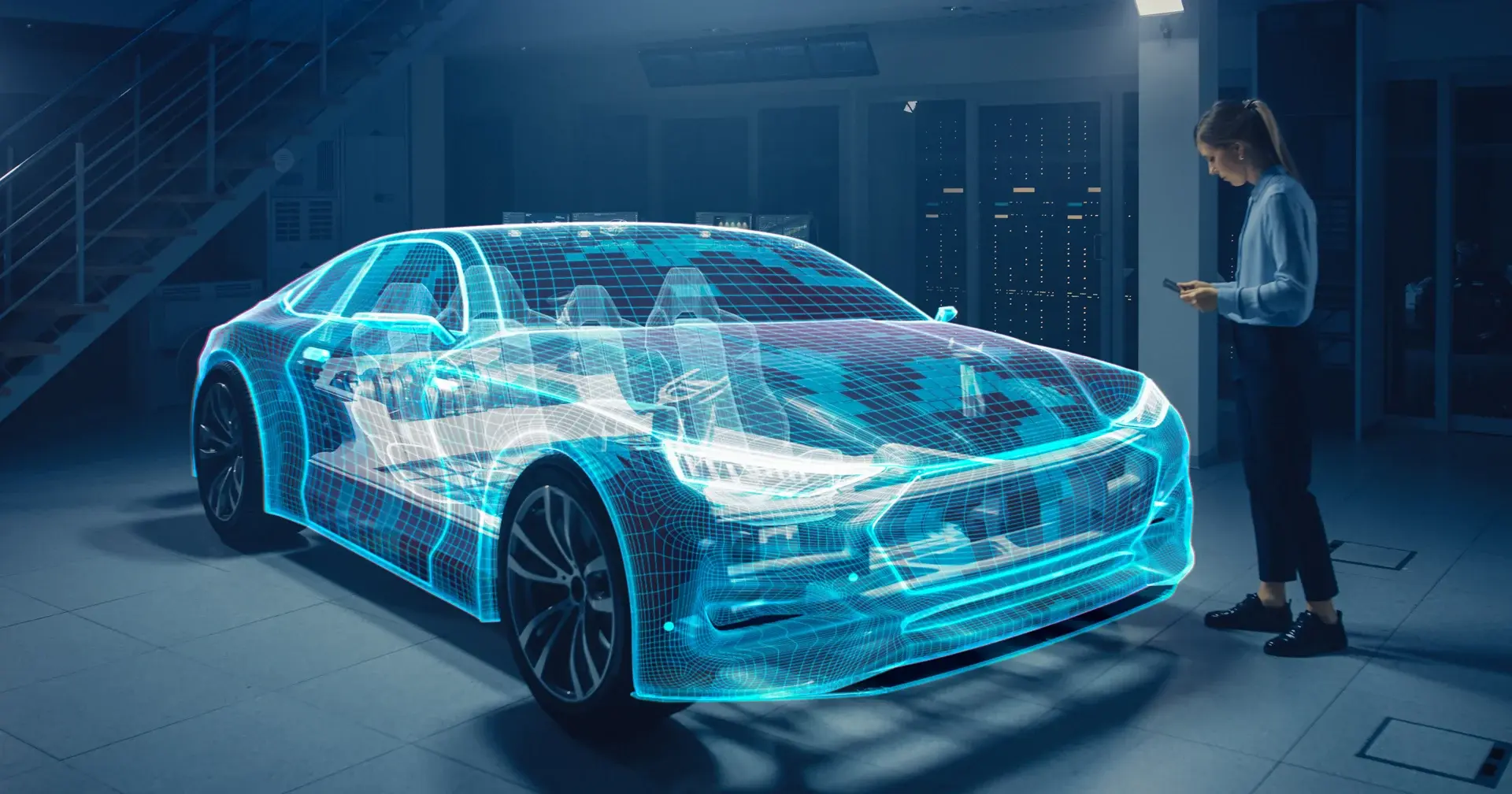The DNA is the carrier of the genetic material and therefore the building plan of our body. Trees also have their DNA and thus their species-specific blueprint stored in their seeds and therefore exhibit so-called "generative growth". This means that depending on where the seed is planted, the growth adapts to external conditions such as sun, wind and water. This means that trees of the same species generate very different growth, even though the blueprint is the same. EDAG has taken precisely this process of adapted growth to the prevailing boundary conditions as a model for the development process. With the help of the Synera software (cover picture: component DNA for a lightweight holder; copyright: Synera), each component will in future have its own DNA, thus enabling a fast and variant-rich product development process known as "Generative Engineering".
The principle of nature is based on the generative growth process and is subject to constant change. But how can this process be transferred to the design and development of components? What does the growth process look like and what distinguishes it from the current development process?
Development process today: Manual. Iterative. Time-consuming. Depending on persons.
Today, component development processes usually run sequentially in successive phases, as described in the waterfall model: We start with a technical specification and run through several phases of the development process. Experts for design, construction, simulation and production planning each work independently with passive software tools. For example, the designer must repeatedly describe the component manually - in this case in the CAD software - surface by surface, radius by radius. He must constantly react to new results of the other disciplines and changed boundary conditions with high manual effort. This means that the requirements for a component are gradually achieved in the individual phases through many iterations. This process can often be very lengthy and cost-intensive due to manual design and simulation, and yet it only ever delivers a limited number of results. Can the optimum of the component or even the entire vehicle be achieved in the shortest time using this process?
The development process tomorrow: EDAG automates and works generatively with DNA.

Figure 1: Component DNA for electric motor stator windings (Copyright: EDAG)
EDAG and the software developers at Synera asked themselves this question and created a solution modelled on nature. What could product development look like if the engineers did not concentrate on the component itself, as is currently the case, but instead defined a set of rules with boundary conditions, similar to a tree, and virtually created the technical version of the DNA?
This idea requires a completely new development process and tools. All previously necessary process steps, such as simulations and CAD design and the associated software, must be integrated into the technical DNA and run through automatically. EDAG uses the Synera software to set up the entire development process in a continuous and automated workflow. This means it is no longer the component itself, but the path to the component that is created as a construction principle in the software.
Once the construction principle, the so-called DNA, has been defined, the workflow can be run through as often as required, whereby the boundary conditions can be adapted again and again. For example, the developer can specify different loads, manufacturing processes or materials and automatically obtain a component that adapts exactly to these conditions. This means that in the future the developer will no longer design each component individually, but will once define a component DNA, plant it in different vehicles and thus develop the component adapted to the environment. Thus generative.
On the basis of initial application cases, various specialist departments at EDAG were able to demonstrate the potential of Generative Engineering:
- Acceleration of the development process
- Weight savings
- Development of previously unattained solutions
At Research project "VariKa", for example, up to 50 % of the development time was saved thanks to Generative Engineering and the reuse of component DNA (Figure 2). The result was also 40% lighter than the conventional development process.

Figure 2: Time saving in the VariKa research project (Copyright: EDAG)
This new approach can of course not only be used to develop vehicle components. The software can be used across industries where new solutions for the optimisation of products are sought in the shortest possible time. No matter whether you want to develop an ergonomically perfect chair or - as has already been done - you want to optimise the bases of offshore wind turbines using this bionic method. Wherever you mainly have a structural problem, we can help thanks to Generative Engineering.
As a leading engineering service provider, EDAG works in partnership with the pioneers of the software industry and start-ups to continuously improve our productivity and expertise.
Maybe you have a product that you would like to develop further or newly, but you are afraid of expensive, lengthy development times and processes, then talk to our expert for Generative Engineering, Richard Kordaß, Project Manager, Competence Centre Innovation. He will be happy to explain all the advantages of the new development method to you personally. 





